[Drabas and Whitlow-grasses: The Generas Cusickiella and Draba East of the Cascade Mts. of Oregon and Washington]
Spring Draba, Spring Whitlow-grass
Draba verna
Synonyms: Draba verna var. aestivalis, Draba verna var. boerhaavii, Draba verna var. major, Draba verna var. verna, Erophila verna ssp. spathulata, Erophila verna var. praecox, Erophila verna var. verna
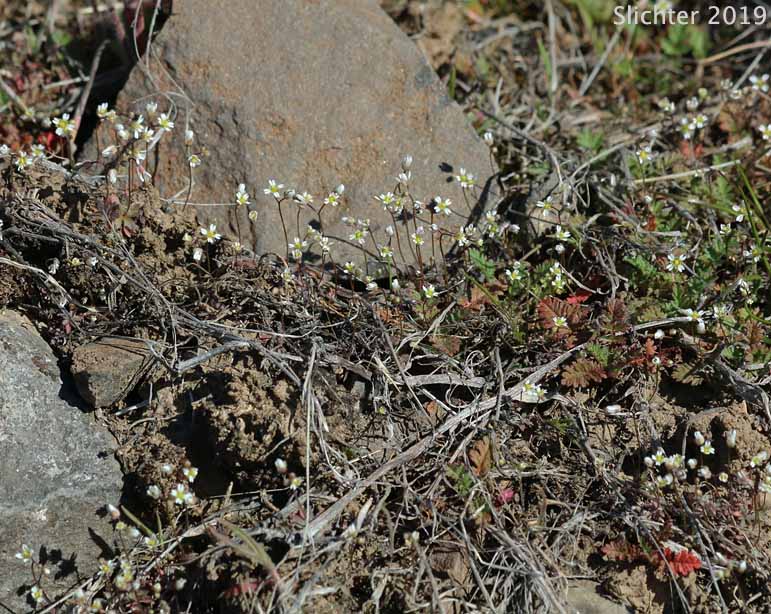
Spring whitlow-grass blooming on vernallymoist soils about 3 miles downstream along the Pinnacles Trail, Cottonwood Canyon State Park.......March 22, 2019.
Characteristics:
Spring whitlow-grass is a small annual that is easy to overlook
because of its diminutive size, yet it is often one of the most abundant flowering
plants underfoot in the west. The leaves are basal, in a rosette, and are often
covered with stiff, branched hairs. The leaf shape ranges from spatulate to
oblanceolate, with entire to toothed leaf margins. The leaves range from 10-25
mm long. The one to several stems range from 5-20 cm tall, and are leafless.
The inflorescence is a loose raceme with 3-20 flowers. The 4
white petals are cleft or split so the flowers look like they have 8 petals.
The petals are about 2.5 mm long. The flowers and later the seed capsules alternate
along the stem. The seed capsules of variety boerhaavii are elliptic-obovate
to obovate silicles, which average 4-5 mm long and 3.5 mm wide.
Varieties:
Variety boerhaavii: Silicles elliptic-obovate to obovate in shape
and 4-5 mm long and 3.5 mm wide. Found from Washington south to California and
widespread in the eastern United States.
Variety verna: Silicles elliptic to elliptic-oblanceolate in
shape and usually about 7 mm long and 2 mm wide. Found occasionally in Oregon
and Washington and east to Montana and widespread in the eastern United States.
Habitat:
Spring whitlow-grass grows on dry open ground, often in grassy
plains.
Range:
Spring whitlow-grass is found throughout much of North America.
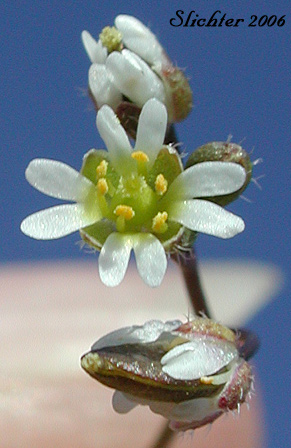 -
- 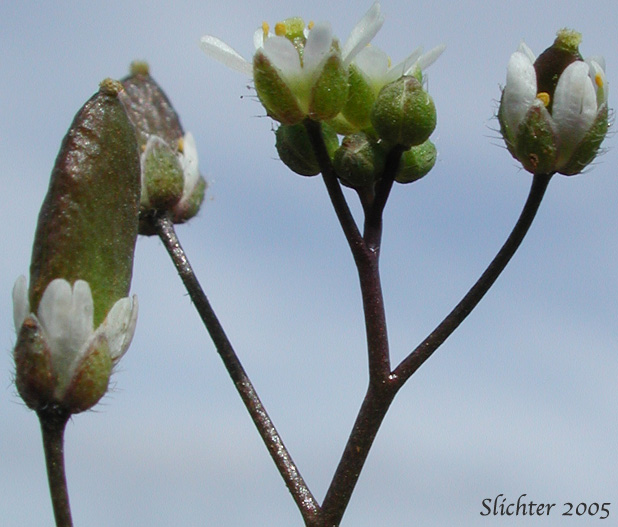
The photo at left shows a close-up of the flower of spring whitlow grass as seen at about 1600' along the Dalles Mt. Rd in the Columbia River Gorge.........March 6, 2006. In the image at right, note the deeply cleft petals and long hairs on the outer surface of the sepals. Spring whitlow-grass as seen near the crest of the Columbia Hills in the Columbia River Gorge.......late April, 2005. Note the broad silicle emerging from the flower at right. Note also the deeply bi-lobed petals, a characteristic of this species.
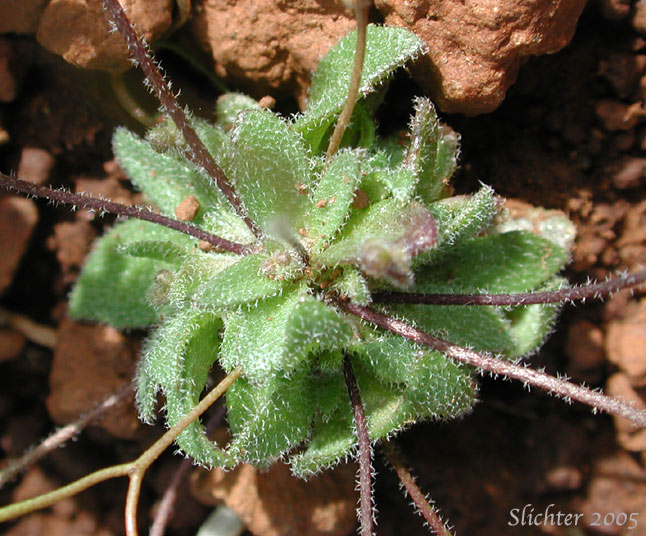 -
- 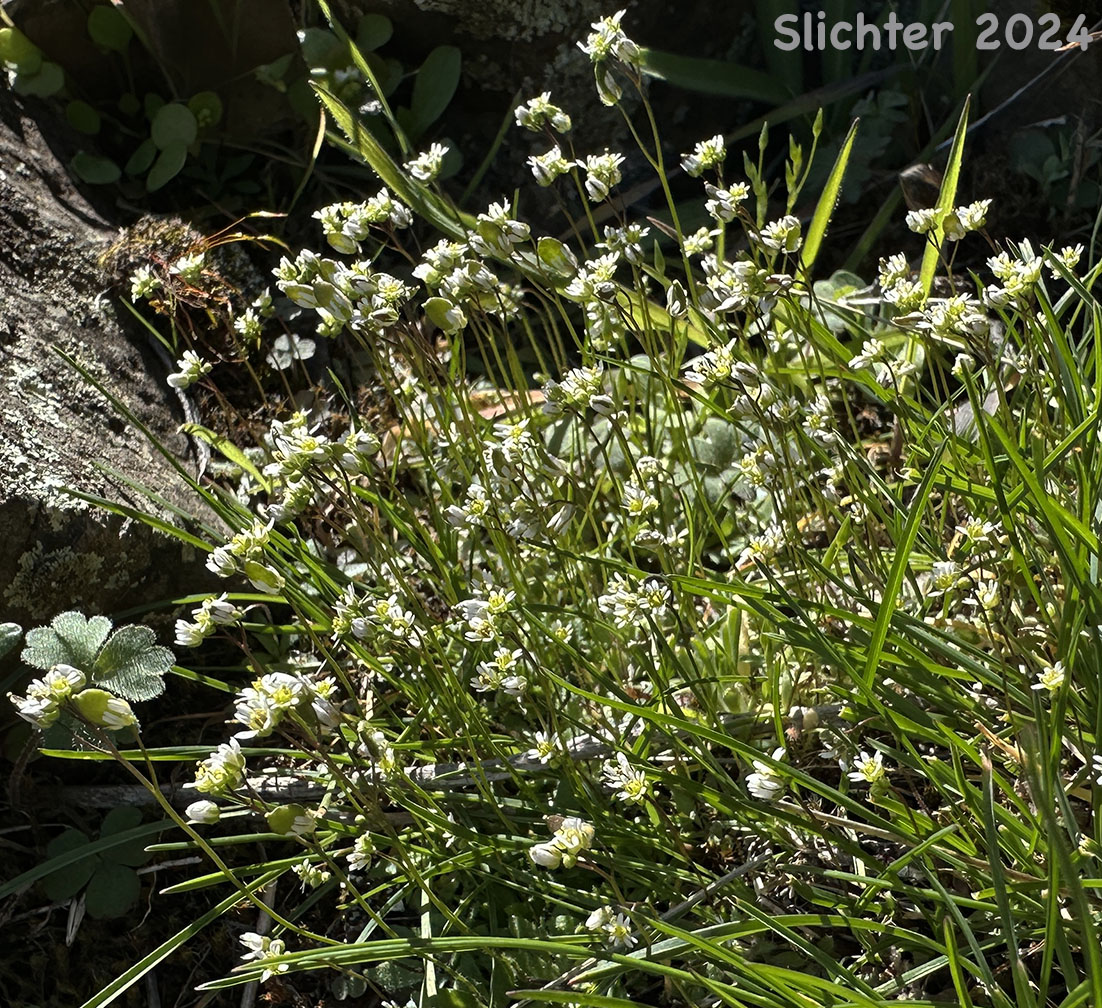
The photo at left shows the basal cluster of leaves. Note the numerous branched hairs on the stems and both leaf surfaces. Photographed near the crest of the Columbia Hills in the Columbia River Gorge........late April, 2005. The image at right shows a mass of spring whitlow grass blooming along the Hard Stone Trail, Cottonwood Canyon State Park.....March 14, 2024.
Paul Slichter